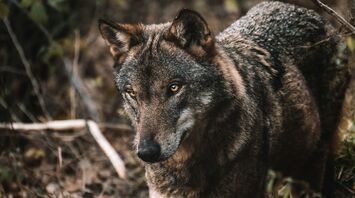The Complexities of Rewilding: Northern Italy's 'Problem Bears'

Northern Italy has faced mounting tensions over the reintroduction of brown bears into the Alpine regions, a situation that brings to the forefront the intricate challenges of rewilding carnivores in populated areas. In February, a male bear known as M90 was fatally shot by forestry police in Trentino after exhibiting "excessive confidence" around humans. This incident, coupled with a fatal attack on a jogger by a female bear with cubs in April, has sparked a heated debate about the balance between wildlife conservation and human safety.
Rewilding Efforts and Local Challenges
The Alps, spanning eight countries and home to approximately 14 million people, boast a rich diversity of flora and fauna. Historically, the region supported large populations of wolves, lynxes, brown bears, and vultures. However, centuries of persecution and habitat loss significantly reduced their numbers. Over recent decades, concerted efforts have been made to protect these species and reintroduce them to their natural habitats, not only to preserve the individual species but also to maintain the ecological balance of the Alps.
In Trentino, the brown bear population has increased from 10 to about 100 since their reintroduction from Slovenia in the early 2000s. These predators play a crucial role in managing the growing populations of red and roe deer, which can impede natural regeneration and increase the risk of car accidents. Rewilding is seen as pressing the reset button on nature, allowing ecosystems to restore themselves to a more natural equilibrium.
Managing Human-Wildlife Conflict
Despite the benefits, the presence of large carnivores near human settlements introduces significant challenges. Claudio Groff, head of the Large Carnivores Division in Trentino, notes that only about 5% to 10% of bears pose a threat to human safety, a statistic consistent with other European regions. The policy for managing 'problem bears' involves community engagement, securing attractants like open bins, and using non-lethal deterrents such as dogs or rubber bullets. Lethal measures are considered a last resort.
Community and Visitor Perspectives
The reintroduction has also found substantial local support, with many residents proud to share their region with these majestic animals. Moreover, the presence of bears has boosted local tourism, attracting visitors interested in wildlife. The region is a popular travel destination, and responsible travel businesses benefit significantly from wildlife tourism, which also serves as an alternative to the increasingly unreliable winter sports industry due to climate change.
The Future of Rewilding
The success of such rewilding projects heavily depends on effective local management and community involvement. Education plays a crucial role in shaping attitudes and fostering a sense of stewardship among locals and visitors alike. While rewilding can offer ecological, economic, cultural, and spiritual benefits, it requires careful balancing of human interests with those of wildlife.
The ongoing debates and incidents in Trentino highlight the complexities of living alongside reintroduced predators. As communities and conservationists seek ways to coexist with these animals, the future of rewilding in the Alps remains a dynamic and evolving narrative, underscored by the need for empathy, understanding, and innovative management strategies.



















